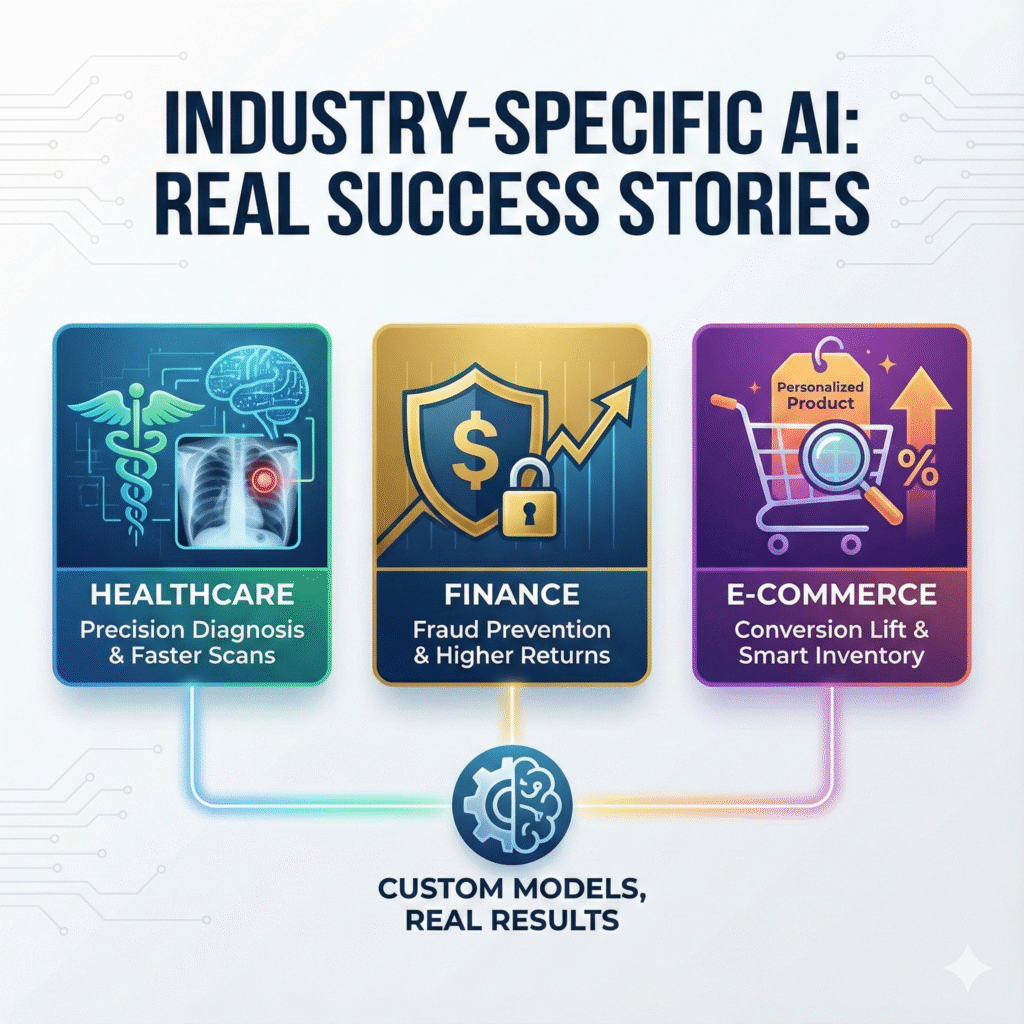From Data to Decisions: How Smart Companies Build AI That Actually Grows the Business
Most businesses sit on mountains of data and still make the same old guesses. (AI for Business Growth)The ones pulling ahead do not have better data—they have better decisions.And those decisions come from AI models built like precision tools, not science projects. Here is the exact playbook the winners follow to turn raw numbers into revenue. 1. Start with the Decision, Not the Data Every great model answer one question: “What do we need to know tomorrow that we’re guessing today?” Reduce churn by 15%?Lift average order value?Catch fraud before it happens?Cut excess inventory by millions? Pick the metric that moves the needle, then work backward.Everything else is noise. 2. Feed the Model What Actually Matters I have watched companies spend months cleaning every spreadsheet only to realize the real signal was hiding in call-centre notes and clickstream logs nobody touched. The best models feast on the messy, proprietary stuff nobody else has: That is the unfair advantage generic tools will never see. 3. Pick the Right Weapon for the Fight Classification for “will this customer leave?”Regression for “how much will we sell next Friday?”Sequence models for “what will this user buy next?”Vision transformers for defect detection on the factory line. Choosing the simplest model that solves the business problem beats chasing the fanciest architecture every single time. 4. Feature Engineering Still Beats Fancy Networks A telecom client once tried every new transformer under the sun to predict churn.Accuracy stayed stuck at 79%. One engineer added three features—days since last recharge, sudden drop in data usage, and whether the customer had called to threaten cancellation.Accuracy jumped to 88% overnight. The lesson?Better ingredients beat better recipes. 5. Test Like the Real World Is Watching (Because It Is) Cross-validation is table stakes.The real test is holding out the last three months of data and pretending it is next quarter. If the model falls apart on fresh data, ship nothing.If it still works when customers change their behaviour after Christmas, you have a winner. 6. Make the Model Part of the Furniture The fastest ROI I have ever seen came from a logistics company that pushed routing predictions straight into the driver app—no dashboard, no export, no human in the loop. Predictions that live in a weekly report change nothing.Predictions that change the next delivery route, the next price on the website, or the next email subject line change everything. 7. Treat Your Model Like a Living Thing Customer behaviour shifted hard after the 2024 election.Companies still running 2023 models woke up to 30% error rates. The winners retrain every week, watch for drift like hawks, and push updates before anyone notices the dip. Real Money, Real Examples A fashion retailer swapped a vendor recommendation tool for a custom model.Average order value rose 17%, repeat purchases jumped 28%, and the model paid for itself in ten weeks. A lender automated 60% of credit decisions with a model trained on their own messy approval notes.Underwriting time fell 40%, defaults dropped, and they approved 18% more good customers the old system would have rejected. A hospital flagged high-risk readmissions 72 hours earlier than before.Readmission rates fell 15%, saving lives and millions in penalties. The Truth Nobody Says Out Loud Building AI that actually grows the business is not about being cutting-edge.It is about being relentlessly focused on the decision that matters, feeding the model the truth nobody else has, and shipping something that changes behaviour tomorrow morning. Do that once and the next five models become obvious. That is how the quiet leaders turn data into decisions—and decisions into dominance. Ready to build the model that finally moves your most important metric?TeamITServe has done it for retailers, banks, hospitals, and logistics giants.Let us do it for you.
From Data to Decisions: How Smart Companies Build AI That Actually Grows the Business Read More »




